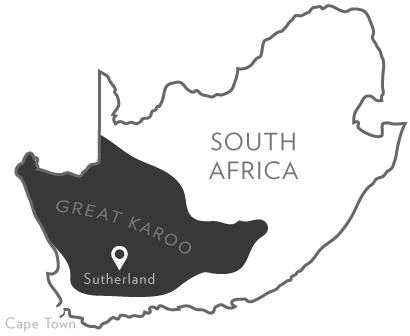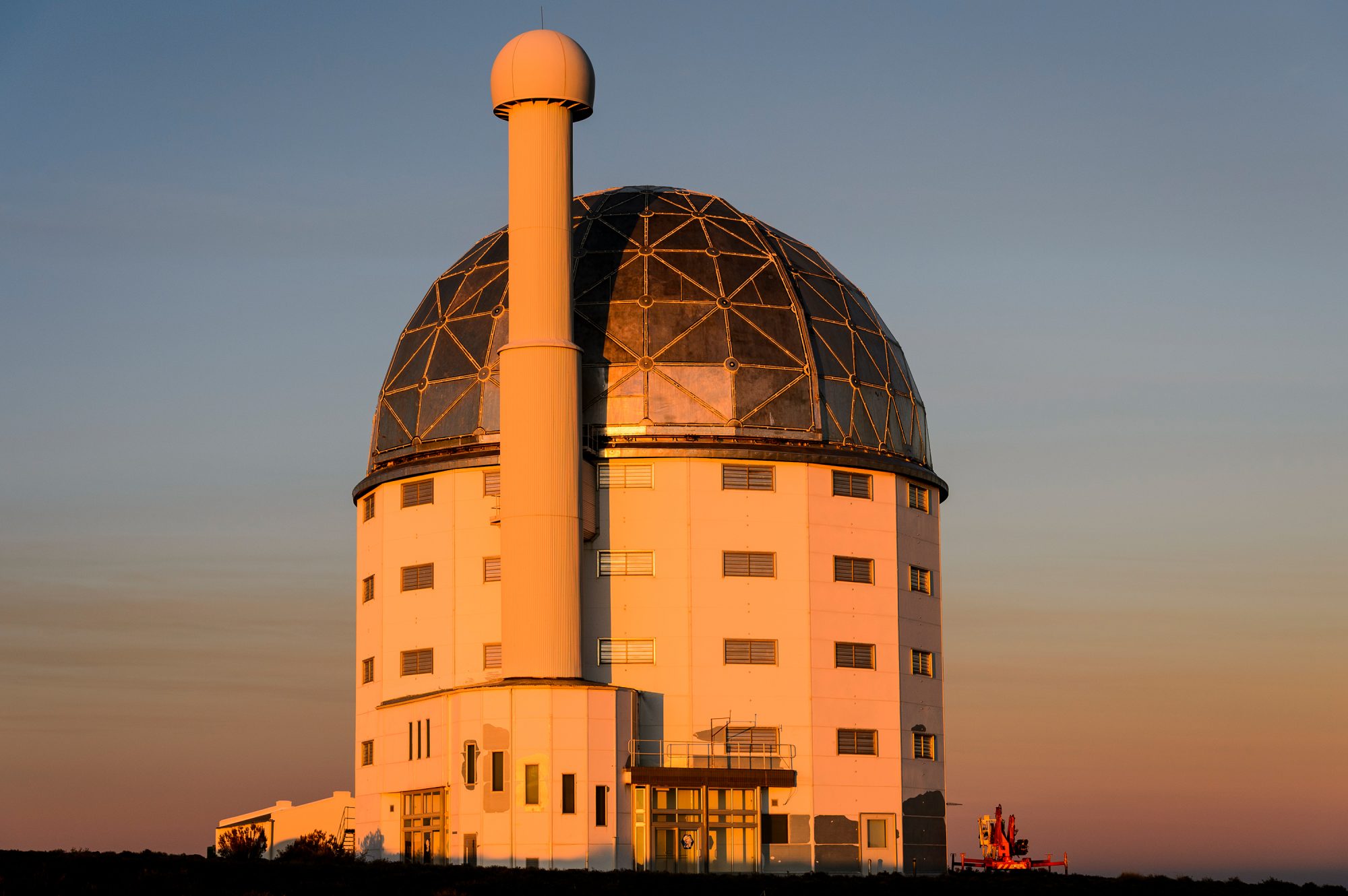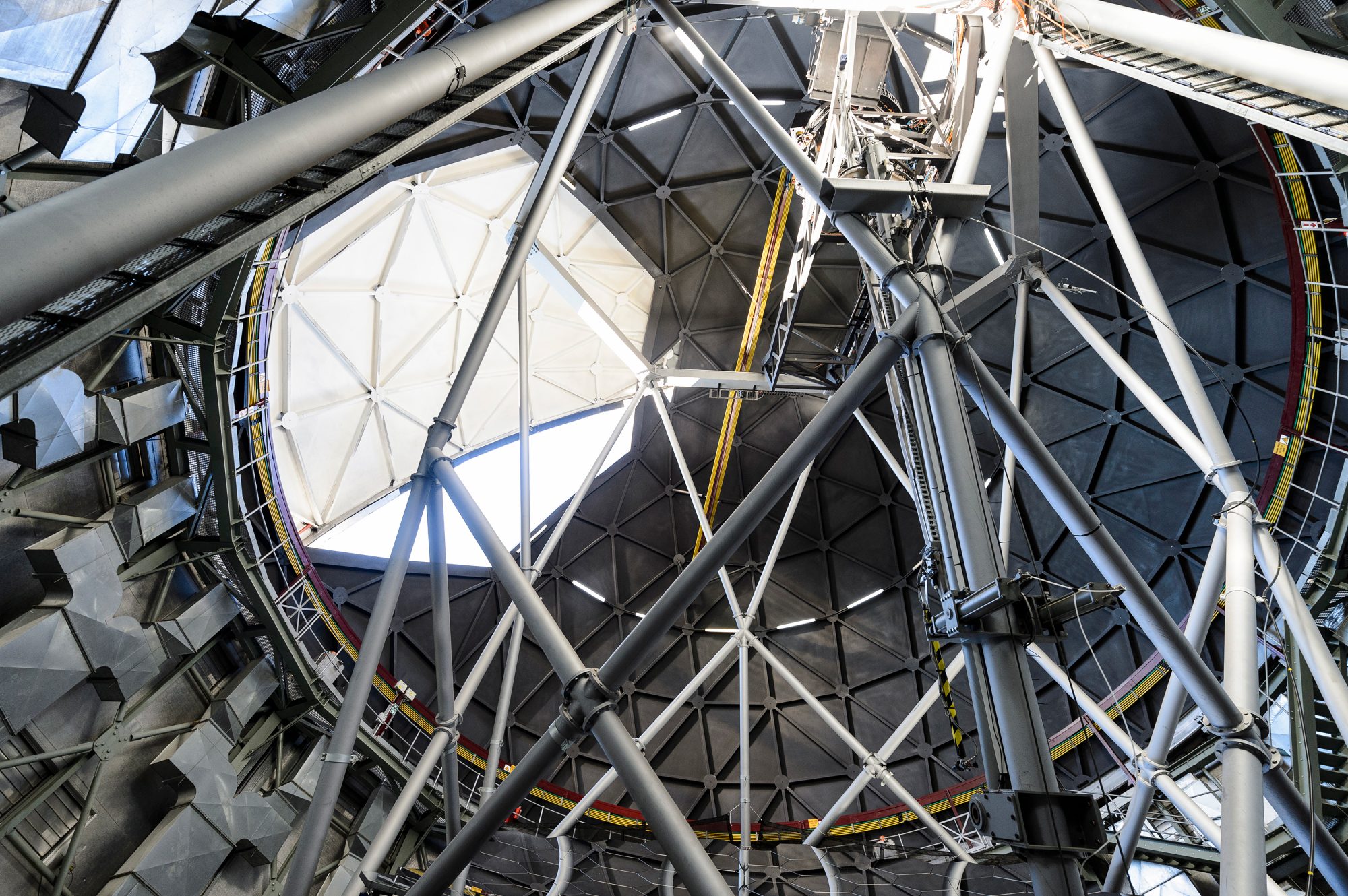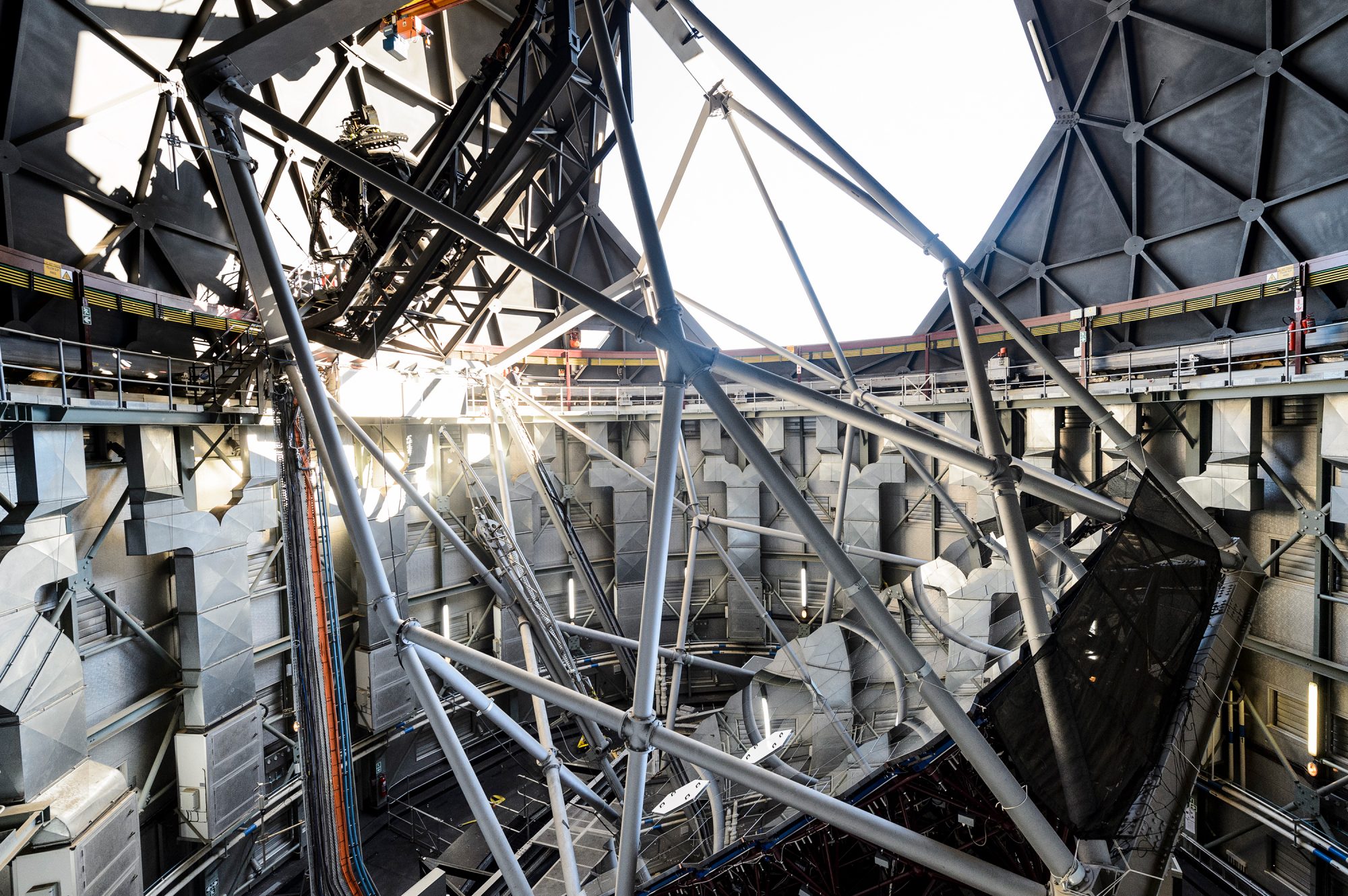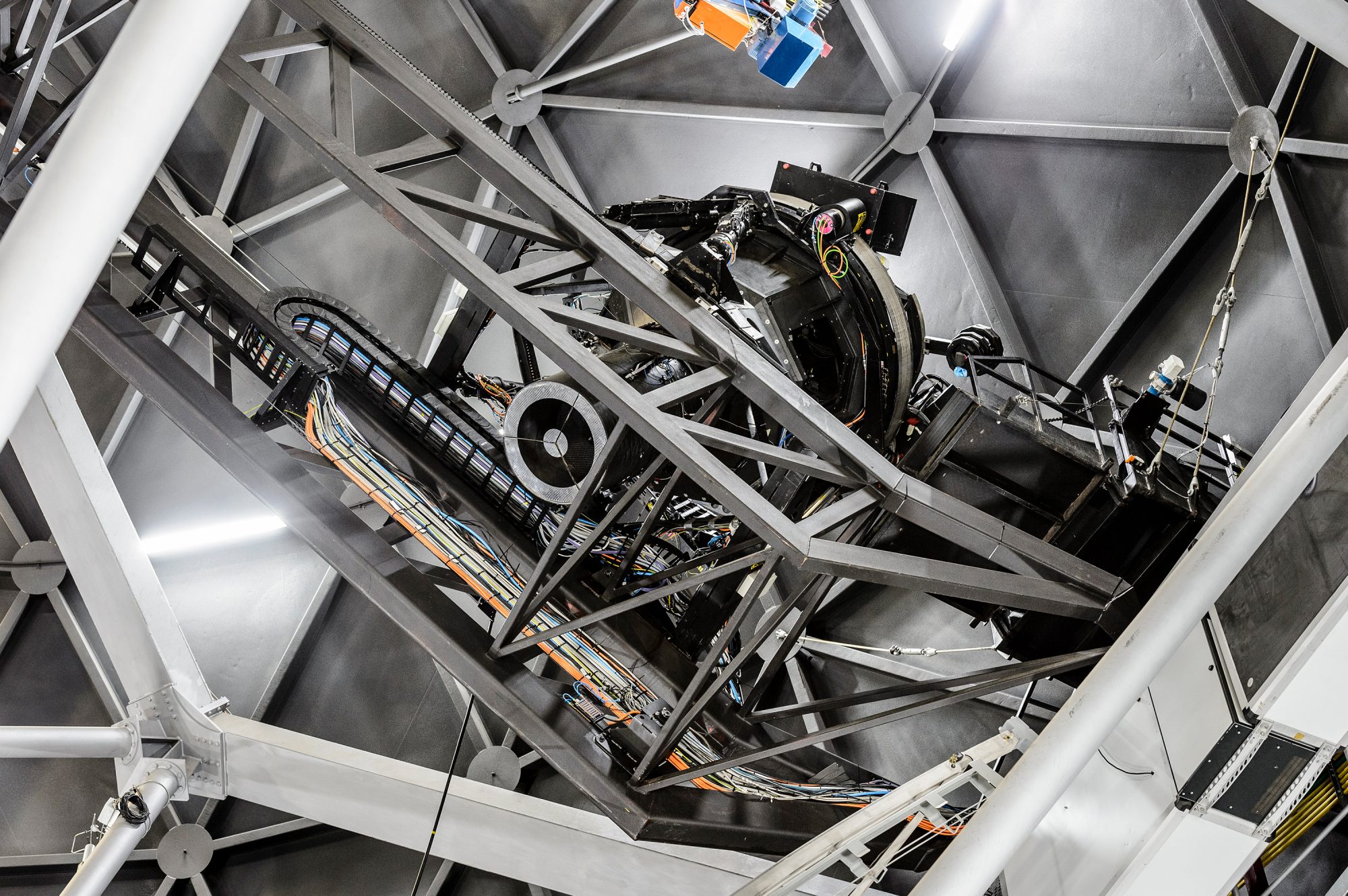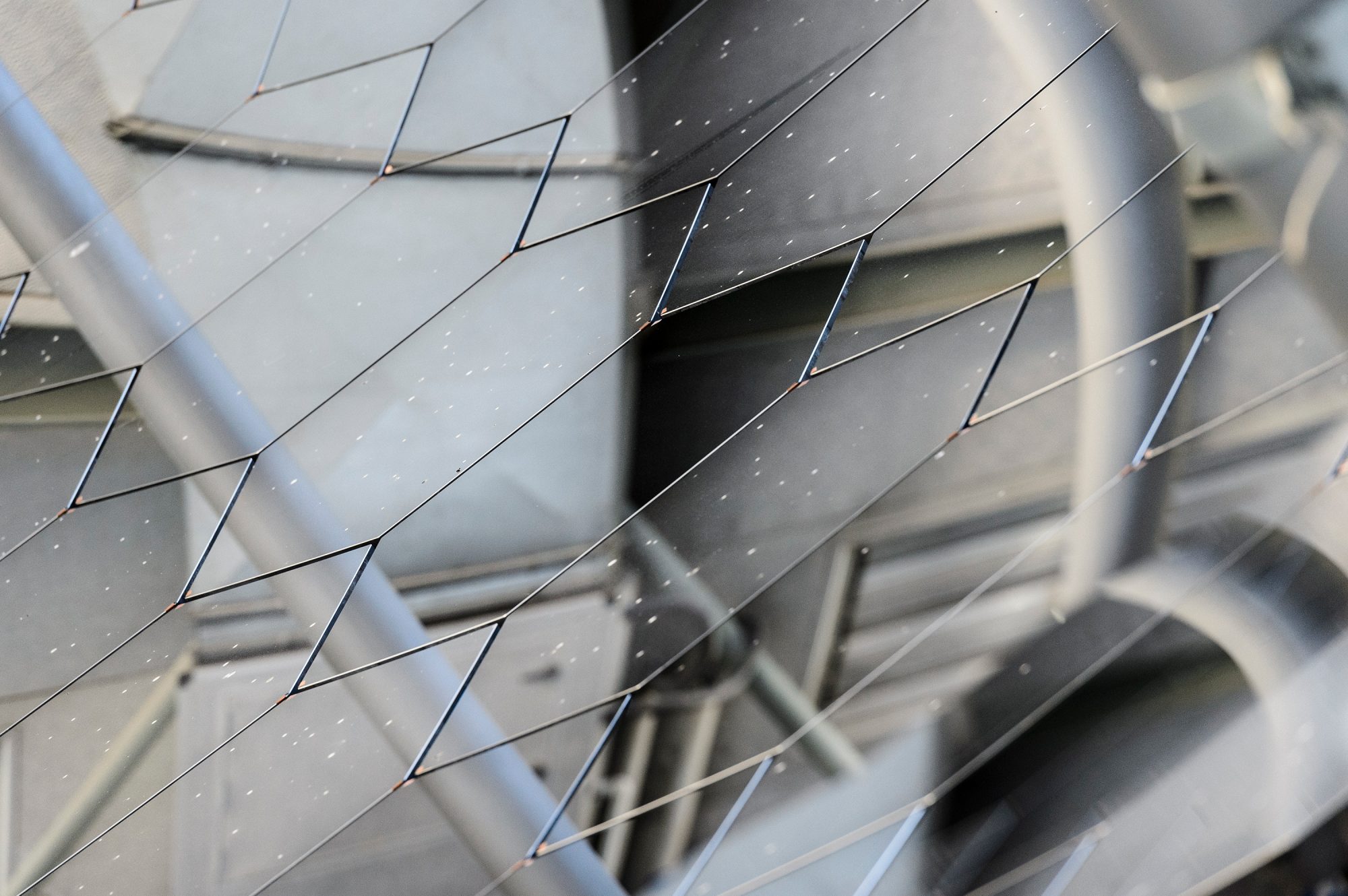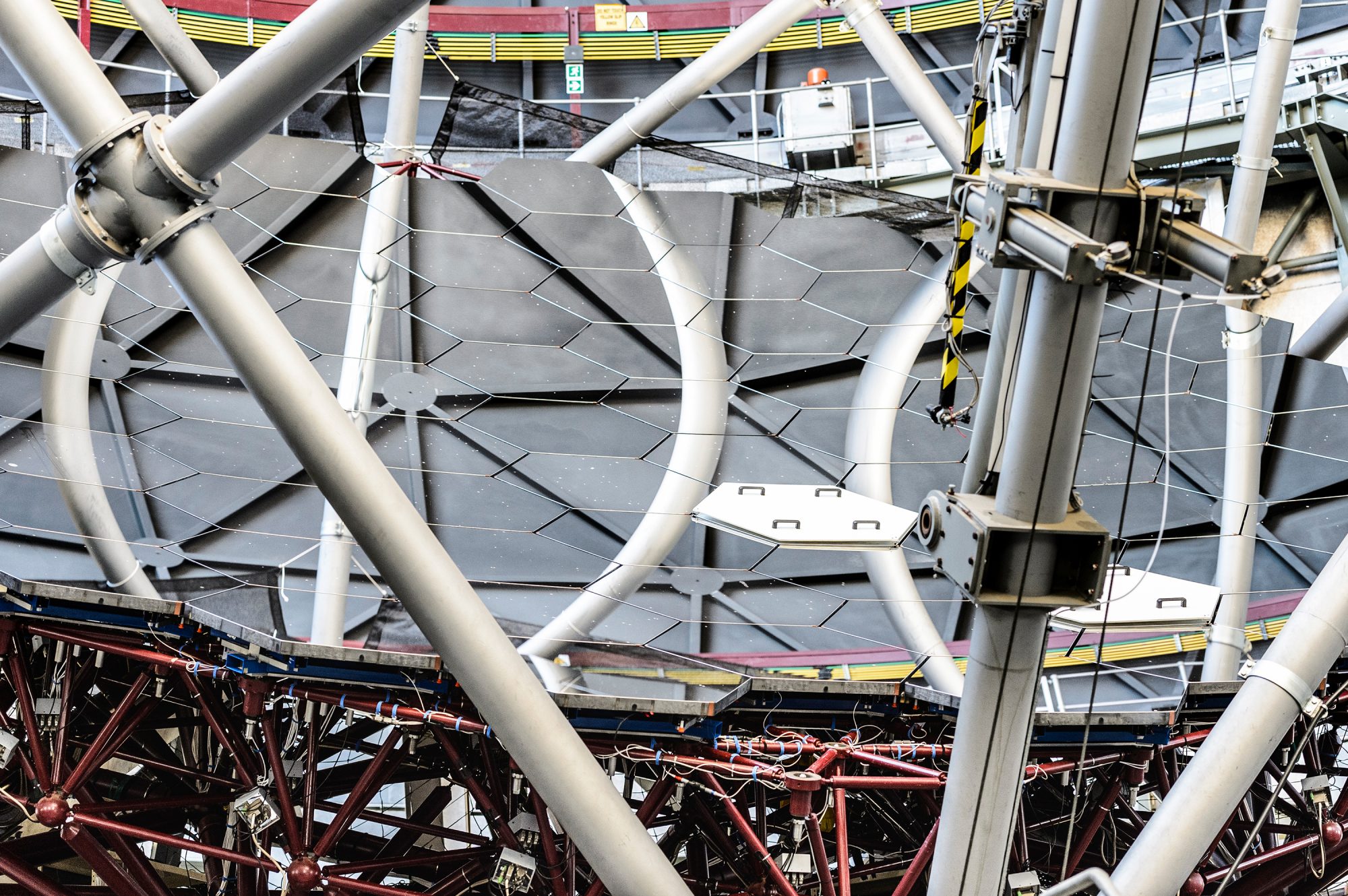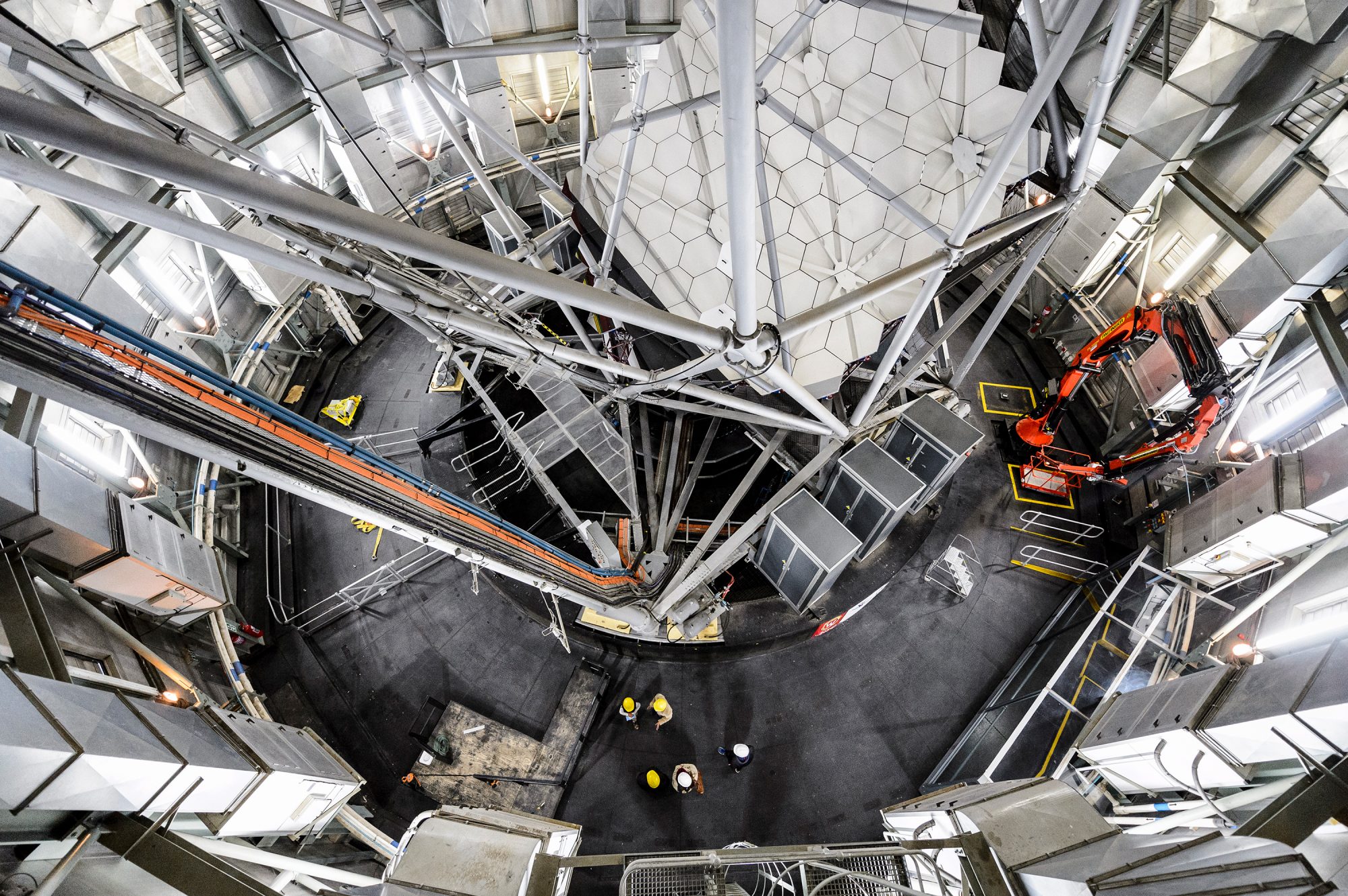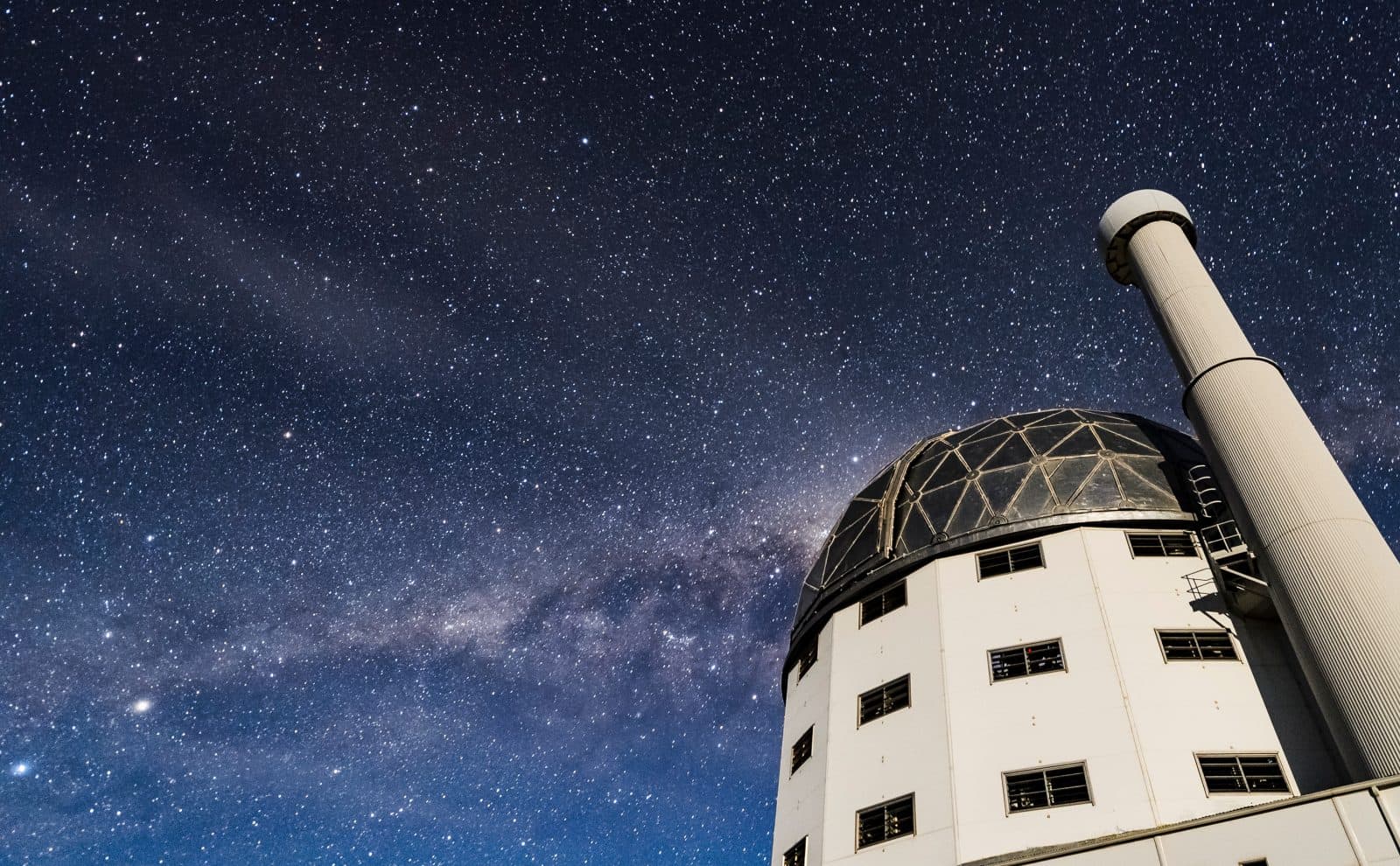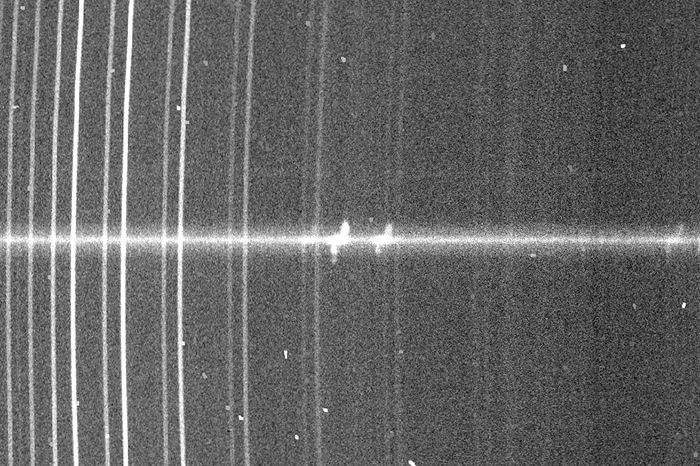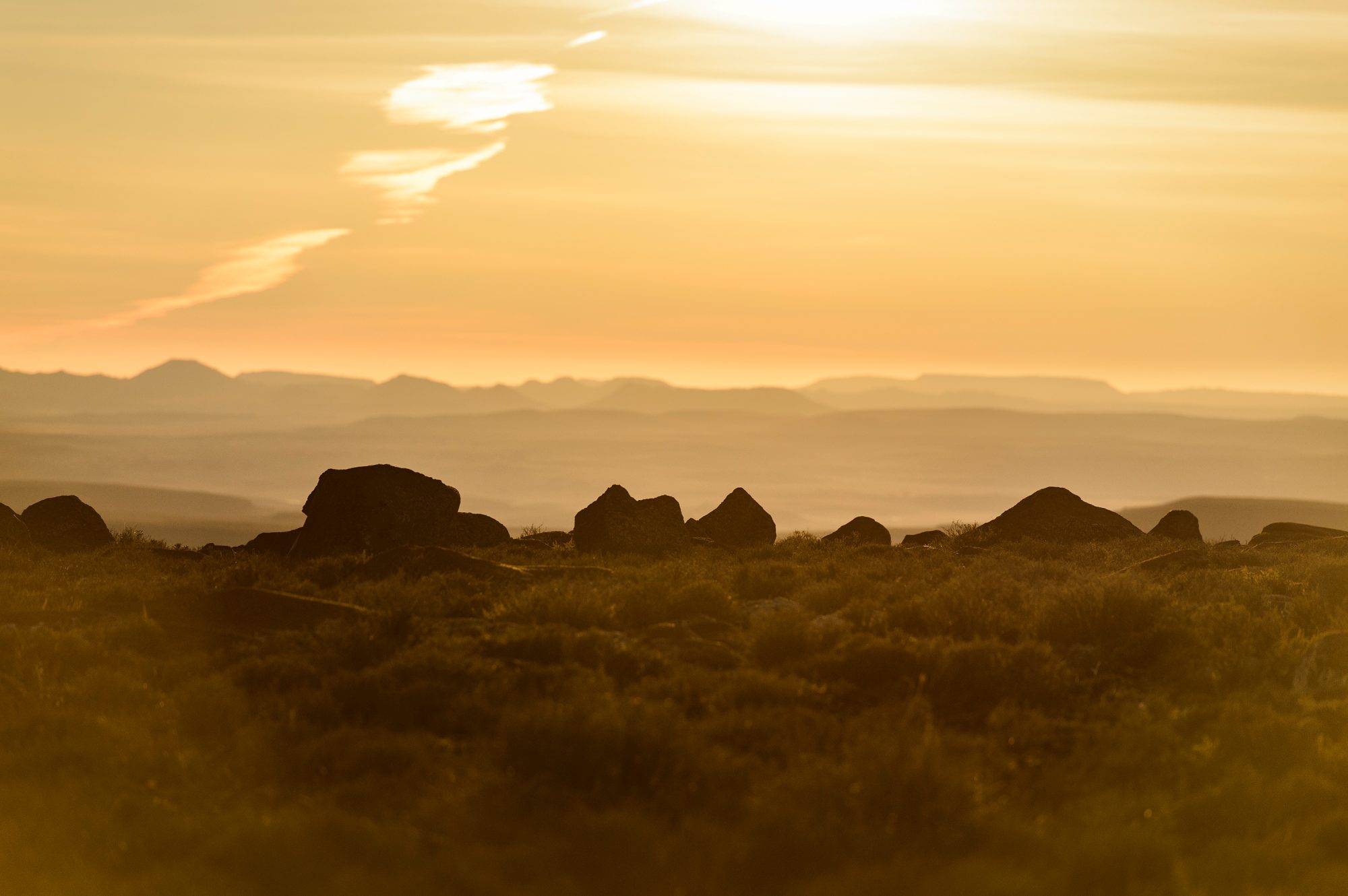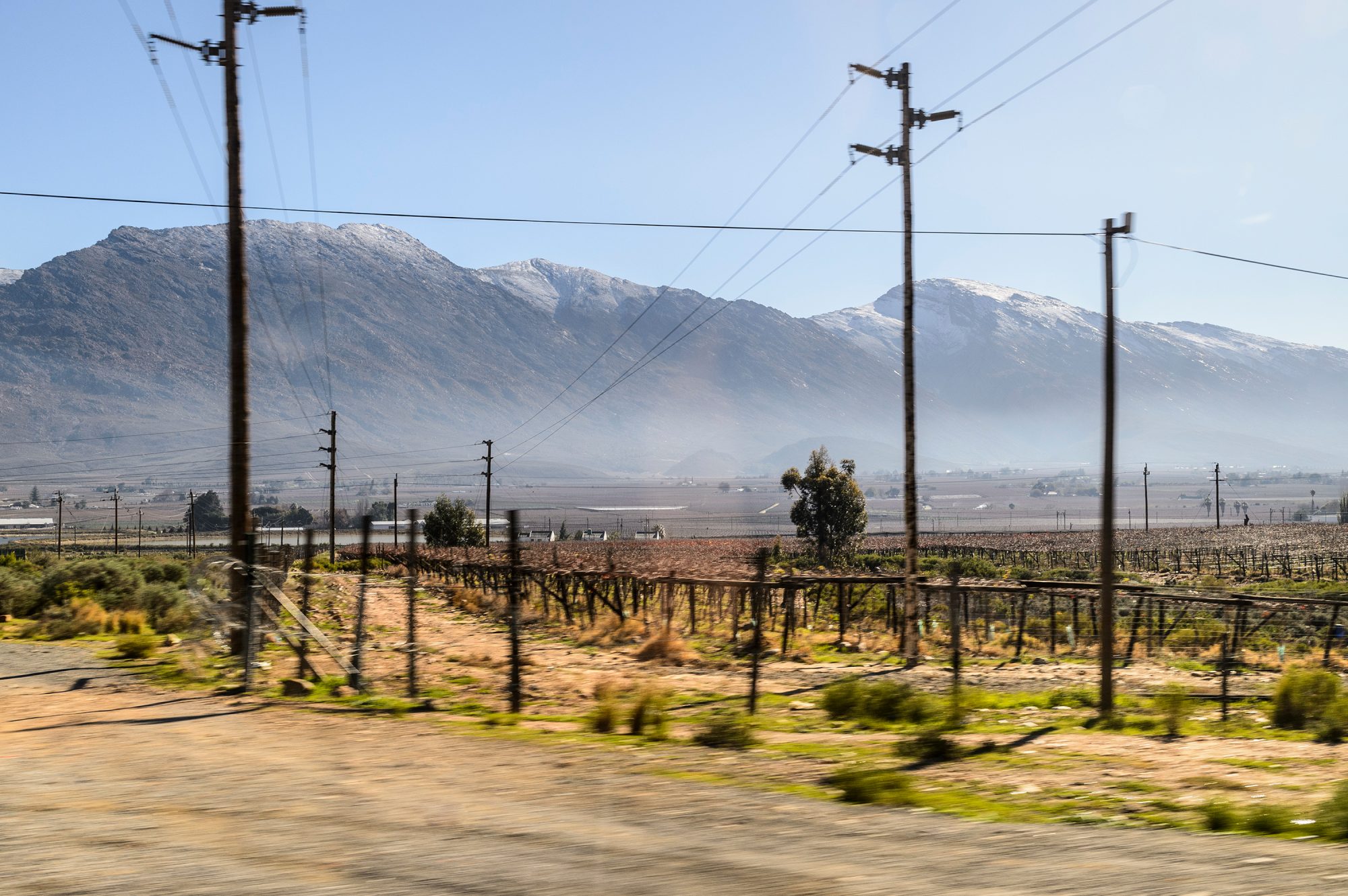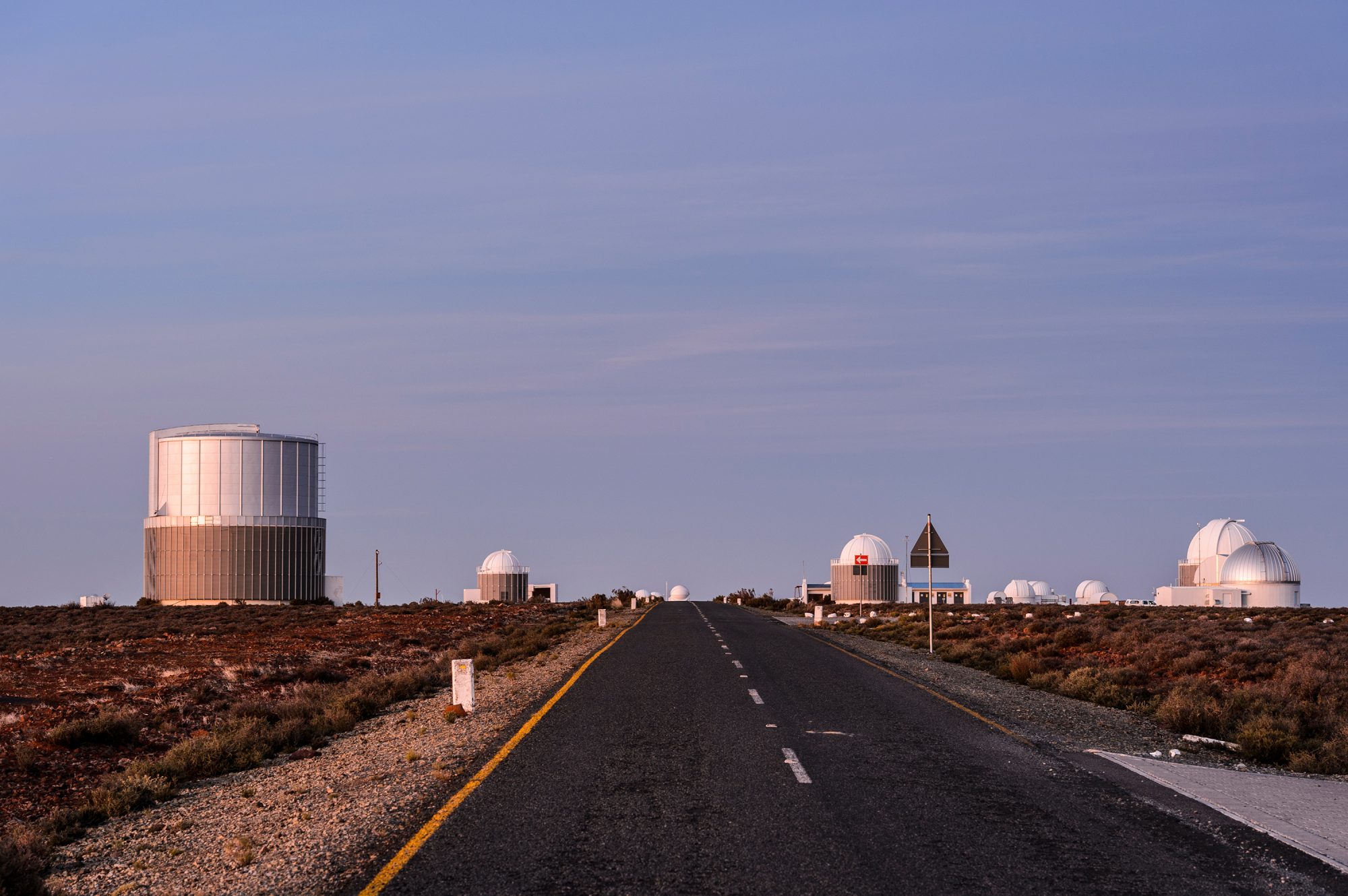The Universe
Scientists use a giant eye in the southern sky to unravel how galaxies are born.
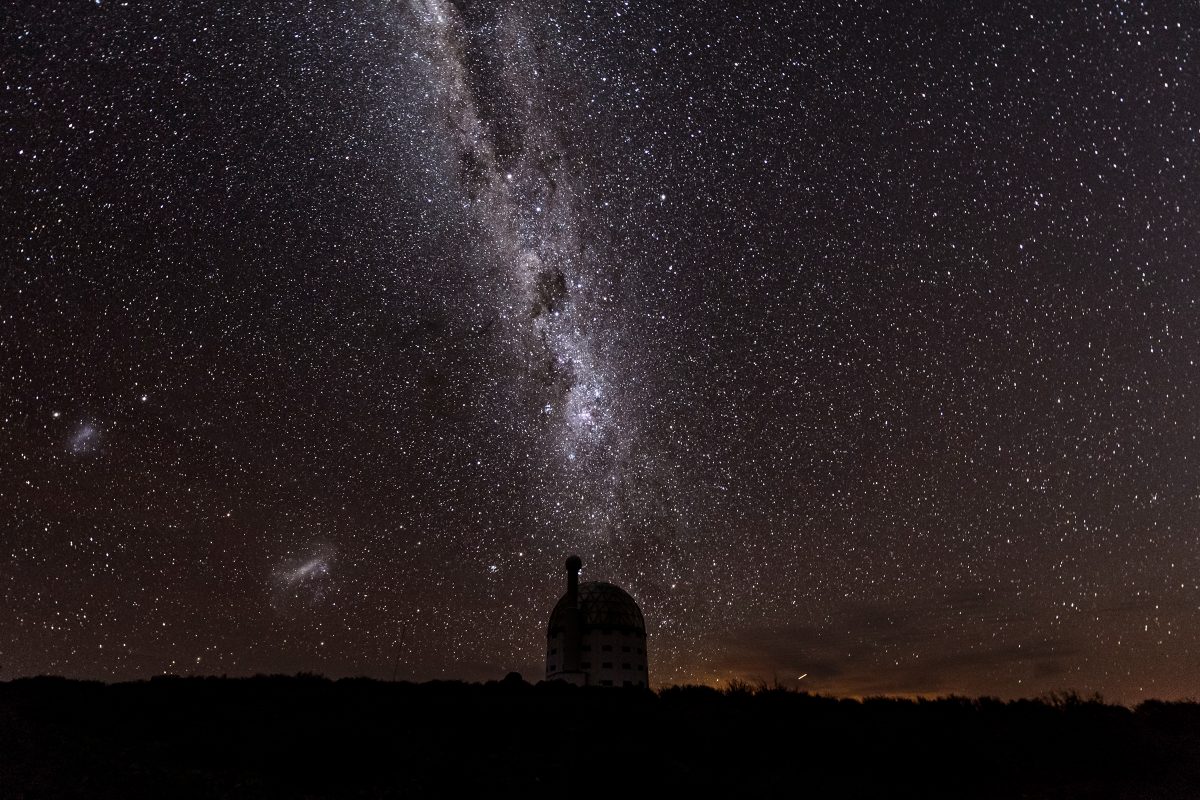
In the rocky, dry hills of the remote Karoo of South Africa, the Khoisan people native to the region tell an origin story of the Milky Way. A small girl, dancing around a fire, throws embers into the deep black sky. There they remain, a blaze of light stretching horizon to horizon. A perpetual fire burning in the sky.
The Southern African Large Telescope (SALT) was built to gaze into these skies, from atop a plateau nearly 6,000 feet above sea level, in the small village of Sutherland.
“The darkest skies I have ever seen are in Sutherland,” says Eric Wilcots, professor of astronomy at the University of Wisconsin–Madison. “You can trace the Milky Way all the way to the horizon.”
Dark, clear skies are essential for a telescope designed to peer into some of the deepest reaches of our universe, and in so doing, to look back in time. “As we look at more and more distant objects, we see those objects as they were when that light was (first) emitted,” Wilcots explains. “We are listening to whispers millions of light years away.”
Astronomers use these whispers, this light, to help them understand how planets, stars and galaxies like our own Milky Way form and behave. By collecting light from objects distant and near, scientists can record the history of our own celestial origins. The more light they collect, the farther back in time they can see.
This is what first brought UW–Madison faculty, staff and student scientists to SALT — the largest optical telescope in the Southern Hemisphere. Outside of the South African government, UW–Madison is the largest partner in the endeavor to operate and maintain SALT. Astronomers like Wilcots are using it to access these dark skies, providing expertise and administrative and financial support while also gaining commensurate time on the telescope.
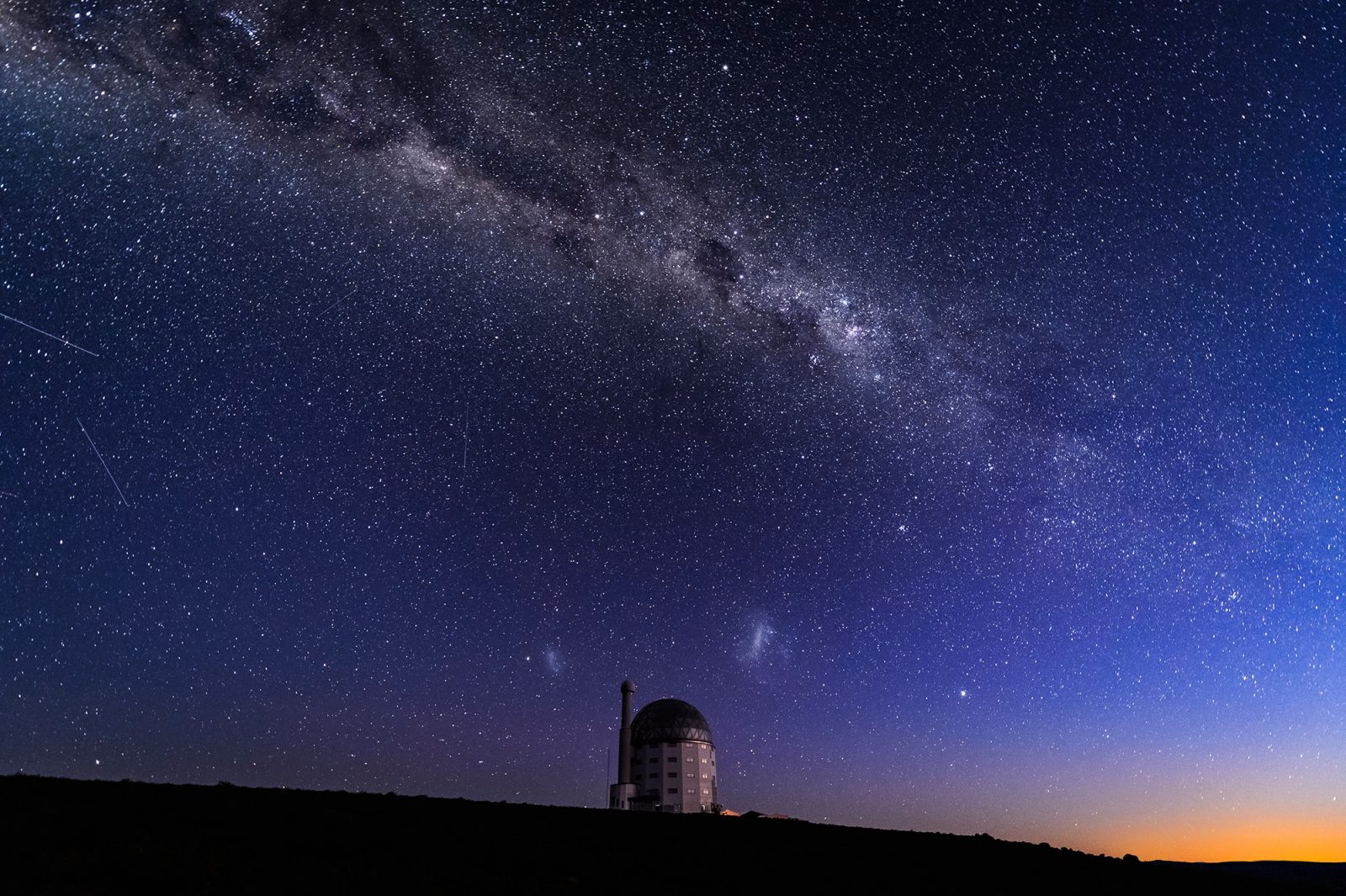
Studying the evolution of galaxies
SALT was optimized to study the Milky Way’s nearest neighbors, two galaxies called the Large and Small Magellanic Clouds. They are visible only in the Southern Hemisphere. Astronomers can use these galaxies, Wilcots says, to “get a sense of both the forest and the trees” because they are “close enough we can resolve individual stars, but far enough away that we can see how the whole ecosystem of the galaxy works.” He has studied these two “satellite” galaxies for decades.
He and other scientists use SALT to study the gases that swirl in and among these and other galaxies. As hot gases cool and condense, they form stars. The most massive of these stars live short lives and die explosively, in a phenomenon called a supernova. In an act of celestial recycling, these explosions return gas to their galaxies, and they produce new elements like gold, seeding the environment with the materials necessary to form planets.
Julie Davis, a graduate student in Wilcots’ group at UW–Madison, studies this cycling of materials in galaxies by investigating the circumgalactic medium: the large reservoir of gas that surrounds them. Understanding how materials enter into and escape a galaxy through this region is crucial to understanding a galaxy’s metabolism. This in turn helps researchers discern the evolution of galaxies like our own Milky Way.
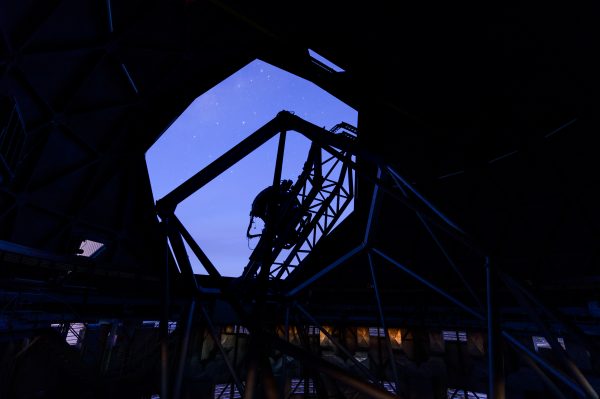
An astronomer’s ‘scalpel’
To see farther back into time and space, modern telescopes are designed to gather large amounts of starlight and transform it into data astronomers can use. Large telescopes like SALT are essentially “light buckets,” Wilcots says. “The bigger the telescope, the more light you can collect.”
SALT achieves this with an 11-by-10 meter array of hexagonal mirrors, 91 in all, aligned perfectly with one another along a geodesic truss at the base of the telescope. It forms a near-perfect sphere. The telescope is purportedly so powerful it can see the flicker of a candle on the moon.
The light collected by the telescope’s mirrors passes through an instrument on the telescope known as a spectrograph, which “is to an astronomer as a scalpel is to a surgeon,” says SAAO astronomer Lisa Crause.
Spectrographs are essentially sophisticated prisms that split white light into its component wavelengths, from red to green to indigo and beyond. Once the light from a source like a galaxy is split, astronomers can gain valuable insights into the object being observed, from its composition to its age, distance, and even how its individual parts might be moving.
Getting sky time
Astronomers around the world compete for time on SALT by submitting proposals. If approved, software determines the best conditions to capture their desired data.
Most will never visit SALT. They, like Davis, will simply download the data files from the spectrograph, assembling them into meaningful information they hope to learn from, publish and share. However, in July 2017, Davis for the first time made the 9,000-mile trek from Madison to Cape Town and then embarked on the nearly five-hour drive through mountains, vineyards and sparse scrubland to the telescope. “I have seen so many pictures of SALT and thought a lot about this telescope,” she says. “Being here is a whole different experience.”
Seeing the flashy-white dome dotting the sparse, semi-desert horizon as she approached it by car rendered her nearly speechless. As she entered the ground floor of the immense dome harboring the mirror array and the spectrograph, suspended 50 feet above it, Davis shook with excitement.
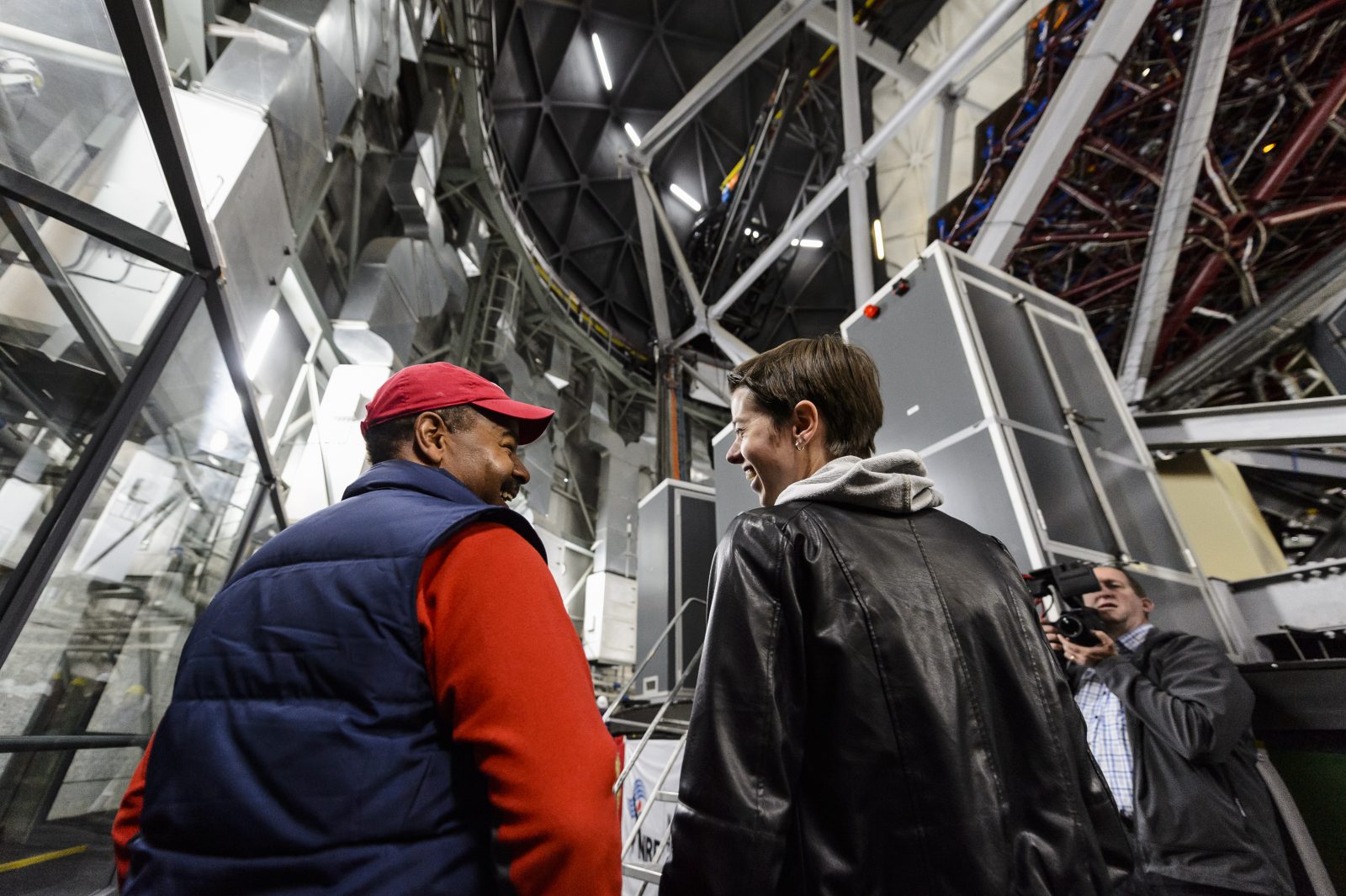
Davis, who collects data from multiple telescopes around the world, has used SALT since early 2016, averaging between three and six hours of sky time each semester. Because UW–Madison is the second-largest partner in SALT, UW astronomers are afforded more time for data collection.
“Everything in astronomy is a giant optimization problem,” she says, given the choreography involved in scheduling time on SALT and other telescopes in order to take advantage of a coveted window into the universe, to get a glimpse at a minuscule piece of the fabric of our origins.
UW–Madison’s history of telescope design
UW–Madison was first invited to be involved at SALT because of its long history of expertise designing and crafting astronomical instruments.
“We were the first place known for doing photoelectric photometry, a technique for measuring the amount of light in the galaxy and quantifying starlight,” says Wilcots. UW–Madison astronomy professor Joel Stebbins pioneered this technique in the 1920s and ’30s, utilizing the photoelectric effect: the concept for which Einstein won his Nobel Prize.
UW–Madison instruments also took some of the earliest trips to space — on the experimental NASA X-15 aircraft and on the Orbiting Astronomical Observatory launched in 1968. The university has developed instruments for Hubble and for two space shuttles.
Stebbins helped recruit the faculty who would become leaders in developing and advancing astronomical instrumentation. Among them was Kenneth Nordsieck, emeritus of the UW–Madison astronomy department and the original designer of the Robert Stobie Spectrograph (RSS), named for SAAO’s former director. Stobie’s vision and direction led to SALT, but he died before the project was complete.
The spectrograph was built in UW–Madison’s Space Astronomy Laboratory and today, members of the laboratory, like senior scientist Marsha Wolf and engineer Mike Smith, are finalizing the next-generation instrument, which will allow astronomers to gather data from the near-infrared part of the electromagnetic spectrum.
Crause is assisting with that effort, because as part of its partnership with SALT, UW–Madison is helping to advance astronomy in South Africa. Since the fall of apartheid more than two decades ago, the nation has embraced astronomy as one of its scientific pillars. Ultimately, local scientists like Crause will lead the charge in forging its future.
“We are in the thick of trying to plan the next generation instrument now,” she says.
‘Science that can change the world’
For decades, until apartheid formally ended in 1994, black and “coloured” people in South Africa — nearly 90 percent of the nation’s population — were systematically denied quality education and jobs.
The country has changed dramatically since, and UW–Madison has helped to create more opportunities for the people once left behind, training science teachers and the next generation of South Africa’s astronomers and astrophysicists since the telescope was first commissioned in the early 2000s.
For instance, UW–Madison helped bring South African science teachers to Madison under its Wisconsin Teacher Enhancement Program, which offered summer science and health courses.
“South Africa has invested in a handful of sciences” in the aftermath of apartheid, explains Wilcots. “They want to build the scientific capacity and leadership of South Africa as a whole.”
Sivuyile Manxoyi is a former teacher who more than a decade ago spent five weeks in Madison as part of the enhancement program. “I grew from the experience,” says Manxoyi, now education and communication officer for SAAO. He hopes to use astronomy to boost South Africa’s historically disadvantaged communities.“The universality of the sky can unite all South Africa’s people.”
Astronomy, Davis says, is a “gateway science for getting kids hooked … to get them interested in physics or geology or biology.” And one of the original goals at SALT was to build an observatory that belonged to the people. It’s working. Despite its remote locale, SALT hosted more than 3,100 visitors in July of 2017.
SALT has helped create a tourism industry in Sutherland that employs some of the local people to operate the telescope and run its visitors center, as well as the hostel that hosts visiting astronomers. The economic impact of the observatory has helped increase access to medical care, internet banking centers, and more.
“We are working hard to change the situation in South Africa and making strides in how people relate to each other, how people are being treated. The ground is being leveled in terms of opportunity for people,” says Manxoyi. “We have traveled a long way in terms of access to education, housing, the challenges of corruption … It is science that can change the world.”
For Davis, pursuing astronomy has meant being able to follow her dreams. She has long been enamored with space; exploring it fulfills her curiosity. Her work has brought her to telescopes all over the world and allowed her to collaborate with people across the globe.
“There is so much human effort that goes into this,” she says. “Hundreds of people came together to build this telescope. We are driven by curiosity. Regardless of the tongue we speak, we have a common language.”
